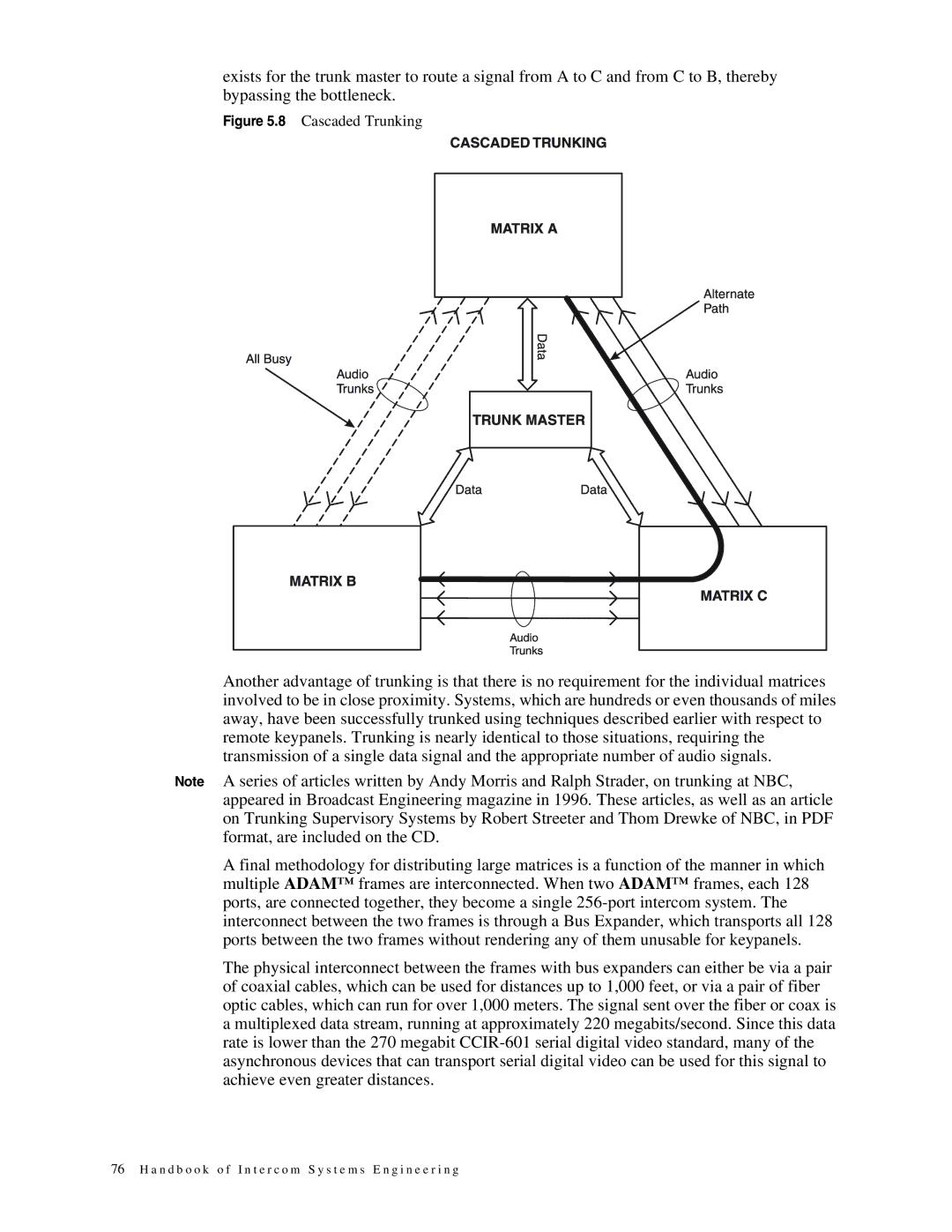
exists for the trunk master to route a signal from A to C and from C to B, thereby bypassing the bottleneck.
Figure 5.8 Cascaded Trunking
Another advantage of trunking is that there is no requirement for the individual matrices involved to be in close proximity. Systems, which are hundreds or even thousands of miles away, have been successfully trunked using techniques described earlier with respect to remote keypanels. Trunking is nearly identical to those situations, requiring the transmission of a single data signal and the appropriate number of audio signals.
Note A series of articles written by Andy Morris and Ralph Strader, on trunking at NBC, appeared in Broadcast Engineering magazine in 1996. These articles, as well as an article on Trunking Supervisory Systems by Robert Streeter and Thom Drewke of NBC, in PDF format, are included on the CD.
A final methodology for distributing large matrices is a function of the manner in which multiple ADAM™ frames are interconnected. When two ADAM™ frames, each 128 ports, are connected together, they become a single
The physical interconnect between the frames with bus expanders can either be via a pair of coaxial cables, which can be used for distances up to 1,000 feet, or via a pair of fiber optic cables, which can run for over 1,000 meters. The signal sent over the fiber or coax is a multiplexed data stream, running at approximately 220 megabits/second. Since this data rate is lower than the 270 megabit
76 H a n d b o o k o f I n t e r c o m S y s t e m s E n g i n e e r i n g
